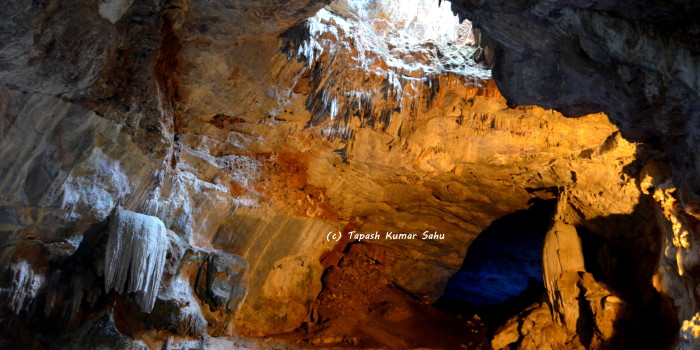I am not an early riser as most of my friends know. But many years ago, I realized – sleep is something I should save for my bed at home. And I find this principle to come in very handy in short trips such as this. The next day, continuing from my previous post, we were again up early and packed, ready to depart from Araku town. Before leaving, we touched upon the APTDC Haritha Mayuri Hill Resort. Tripadvisor and other sources had mixed reviews about the place and the service. But I can tell you the view is beautiful, overlooking the valley. The rooms had views onto this side, and in the morning, it was splendid! There is another APTDC Haritha Hotel nearby, the Valley Resort, in the Araku town, which is more basic, and no view to speak of really. We were told that the service and food are the major draw backs of these places.

Then we started our journey out of Araku, heading to Ananthagiri. The winding roads and the misty breeze were beautiful as we saw coffee plantations and pepper being grown along the way. All kinds of local spices were being sold, and there was also this Friday farmers market in Araku when all the locals come shopping, and even hoteliers in Visakhapatnam and en route places stock up their grains and vegetables. Quite a sight really! The hills have another waterfall, not a clean one again, but amidst the tribal hamlets, a popular hangout for the locals.





A little further was the Borra Caves, again located in the Ananthagiri hills of Araku Valley. The caves are known to be one of the largest in India, and have various geological formations like speleothem, stalactites and stalagmites made of calcium and limestone deposits. While there were many conducted tours available, we chose to explore ourselves. I prefer that, not be hurried. This cave has extensive construction inside, making stairs available, various lamps illuminating the formations inside. One of the interpretation of the various shapes these geological structures have taken is that of natural shiv ling, also one of the human brain and so on. There’s a small temple built on top, accessible via a series of steep metallic ladders. While most of the cave is quite well accessible, the temple on top is a little precarious to reach. The inside of the caves have lower temperatures.

Another interesting thing is the multitude of Bengalis visiting this place from Bengal. There are series of restaurants serving almost authentic Bengali food, and in fact most of the people spoke the language as well! After Borra, and picking up a bit of the famous Bamboo Chicken, we headed to our abode for the evening – the Jungle Bells Resort in the midst of Tyda. It’s an eco-tourism resort built by the State Government and the State Forest Departments. The log huts have AC option, and are neatly decorated, spacious bathrooms, comfortable. You get the secluded feeling especially at night when there’s no one around, and you can hear the sounds of the forest! There is literally no mobile network coverage here, as yet, no television in the rooms. There is tribal music and dance every evening in the restaurant area, and while it was drizzling that day, I could see the performers were not deterred. There’s no alcohol served, and the restaurant is the only option here. And this is where we had both our dinner and the breakfast next day. While food is quite alright, the service is slow. There are a lot of activities set up, but not maintained, like tree climbing and rope walking. This needs to be addressed, else this property would just end up being a stop-by resort.
APTDC has various trips from Visakhapatnam to cover Araku, Borra Caves and Tyda. The train journey, which we couldn’t take, starts at about 6:30 am, and goes through a large number of long tunnels, quite a sight I hear. Or you could drive down, or hire a car, and explore this side of AP. Quite beautiful and not too crowded. The best time to go is around November – January, as it’s the only time the place is not hot.


TrackBack URL
https://www.sheknowsgrub.com/borra-caves-and-the-eastern-ghatss/trackback/